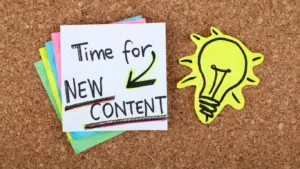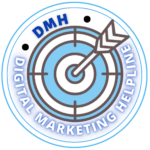 Create a Content Calendar for Digital Marketing
Create a Content Calendar for Digital Marketing
What Is a Content Calendar For? One of the critical issues that newly established businesses encounter in the current digital marketing environment is the need to attract the attention of the target consumers.
Indeed, developing high-quality content and making it known worldwide is key to increasing brand recognition and growing sales and leads. Still, for most budding enterprises, content marketing is an excessive burden. After a day of brainstorming and generating new ideas, having to schedule posts to ensure that your brand’s message is consistent across your digital marketing mediums sounds like a hassle.
This is what creating a content calendar is for. Creating a content calendar is your guiding star throughout your engagement campaign. It will help you align your digital marketing activities, maintain stability in your undertakings, and keep your goals in mind. The content calendar is your headquarters for all content, letting you Plan it in advance so you do not have a last-minute hustle before The tone and voice you’ll use to stay on target in all your opinions. Make content for people, not for your personal Management of your social human capital.
Creating a Content calendar begins with a series of steps
Defining your goals and target audience: Any marketing strategy’s pillars are the goals and the target audience. Before creating content, familiarize yourself with your marketing goal: what do you want to achieve by content marketing? Whether it is brand awareness, lead generation, increased traffic, and high website traffic, among others, define your goal to help you create content that aligns with marketing.
Understanding your target audience: who will be consuming your content? You are creating a buyer persona that includes in detail a profile of your ideal customers where you include demographic information, interest, pain points, and online behavior to understand your customers well to create content speaking to their needs and challenge some of
The questions to ask on goal and target audience include
- What are the main challenges facing my audience?
- What content will add value and be informative to them?
- What is my competitor doing with content marketing?
- How will my content differentiate me and make me a trusted leader?
By answering the above question, you will build a content calendar with the right content and audience to achieve your marketing goal.
 Select your Content Channels The digital space has many platforms where you can publish content to reach your audience; however, maintaining the platforms is overwhelming for a startup business. Some of the essential channels to focus on include website blogs. Your blog is a content hub featuring articles, practical industry insight, and thought leadership on business issues that matter to your audience.
Select your Content Channels The digital space has many platforms where you can publish content to reach your audience; however, maintaining the platforms is overwhelming for a startup business. Some of the essential channels to focus on include website blogs. Your blog is a content hub featuring articles, practical industry insight, and thought leadership on business issues that matter to your audience.
Social Media Platforms: Many people use Facebook, Instagram, Twitter, and LinkedIn. Make excellent posts and links to know how to reach the website where you are selling your content. Alternatively, there is email marketing; sending email newsletters has remained a powerful tool in the current world. Remember, the target is to find the right channel where your audience spends most of their time accessing the content. Generating content ideas, Industry trends, what people are reading today, and what is hot that people will love that you are writing or creating content about.
Analysis of competitors – What kind of content type are they using? Search what they do but do not copy theirs. Research the audience, use social listening tools, and maybe surveys or quizzes to understand what people will want you to know. This will help you list the best-performing topics and content types you need to use. Content mix: You may not stick with word content; consider the infographics, podcast, and case study, and do not forget presentations or videos based on listeners or readers.
Schedule Your Content and Organize Your Calendar: After choosing the goals, target audiences, and type of content, develop a plan for each content on the calendar.
Below is a guideline on how to go about it.
- Content Calendar Format: Various calendars exist, and no right or wrong method for creating content exists. The outline depends on how a creator operates, and they include:
- Physical Planners: Some business people like their continuity in the physical world. Some create a dedicated note in notebooks or planners that gives them visual and hands-on experience.
- Spreadsheets: A content creator can create columns in topics such as content title, target channel columns, content publish date, content format, and even a column to assign to different people on the team.
- Online Content Calendar Tools: Many platforms have a content calendar feature. Content creation can be from a project management tool or any other content marketing option one can consider. They can also link with social media posts and analytics tools for a well-organized system.
Generation of Content: Sample the choice of format one goes by and attach the content to the various channels.
- Posting frequency: the content creator has to make sure they are making regular posts on each channel. They have to strike a balance between staying consistent with their audience while at the same time not flooding them.
- Optimal posting time: check the perfect time to post on several social media channels for maximum post-ability.
- Holidays and events: The content creator must be creative with rhyme-based content during events and holidays.
- Content Variety: They have to decide the kind of content to post on a particular day so the audience can expect to find something new.
- Applying color: use color codes to remind one of varied content colors, type of content, or any other variation one has in mind.
- Tasks and deadlines: assign deadlines to the team members, and review content creation and change accordingly.
- Regular reviews: Content calendar works and allows you to see for yourself if the strategy is working.
Content Calendar Best Practices for New Businesses the following best practices will ensure that your content calendar for your new business is a tool and an asset that will help you achieve your broader digital marketing goals.
A content calendar should never be a source of slavery but should support your growth and success by eliminating stress from the behind-the-scenes process. The basic key to making this happen seems obvious. That is, the first thing you should do is:-
- Stick to the schedule– You will hardly get more out of your content calendar by failing to use it consistently, as intended a feasible timetable.
- Plan for the unplanned– although you are correct that things do not work sometimes, you can always work around that. Keep a couple of extra content concepts or buffer days available to ensure your content timeline quality.
- Monitor performance– Keep an eye on the most important metrics -website traffic, social media engagement, leads, etc.
- Data-driven decisions- While having a clear-cut formula for creating a content calendar does not fully exist, you should be flexible enough with evolving trends and real-time opportunities to capitalize.
- Repurpose and promote– Use content promotion and social media marketing strategies to promote your content across all platforms. Tactical organic and paid strategies will imply that you will connect with as many qualified leads as possible.
- Repurposing– You can reformat existing content into different mediums, such as transforming a blog post into an infographic or vice versa. Track, analyze, improve.
- Monitor critical metrics– These are reports on website traffic, social media engagement, and lead generation. Analyze data insights. Understanding the most critical consideration means collecting data.
- A/B test: test two pieces of content to see which achieved your goal and which did not. It often feels like a win to get the content calendar set up.
However, new businesses can accomplish the above and more by following these best practices. A well-crafted content calendar will help you with legitimate content creation endeavors.
 Conclusion: Unlocking the Power of Consistent Content Creation
Conclusion: Unlocking the Power of Consistent Content Creation
There you have it, an in-depth understanding of the difference an excellent content calendar can make. However, don’t forget to dismiss your calendar as a simple schedule is easy. This is a strategic roadmap for a content-generation journey. This is a plan you will need because the internet landscape is constantly changing, and it will ensure your content is as focused, consistent, and efficient as possible.
Summary of what we have learned today:
- Content Consistency is King: Whether the target is to drive brand recognition, cultivate leads, or close the final sale, one must be consistent in producing and exhibiting content.
- Content Calendar: A Champion content calendar is your ace up your sleeve. You may use it to plan, arrange, and record content creation and publication efforts across multiple platforms. Or avert it entirely and battle missing deadlines, jog over town for inspiration, and screw around.
- Benefits on New Biz: For a new business, a content calendar is a time-saving, performance-optimizing, growth-enabling tool.
These are the steps to follow while using all the insights and best practices in this blog to creating a content calendar around your content marketing strategy for your brand. So here’s what to do:
- The purpose is to understand your marketing objective as well as the audience.
- Decide what communication channel works best for your target audience.
- Develop relevant content that carries as much impact on the brand as possible.
- Also, ensure that such content is accessible on the platform you have chosen.
Well then, it is always a matter of periodic effort as you continue to keep up with the progress through feedback.

